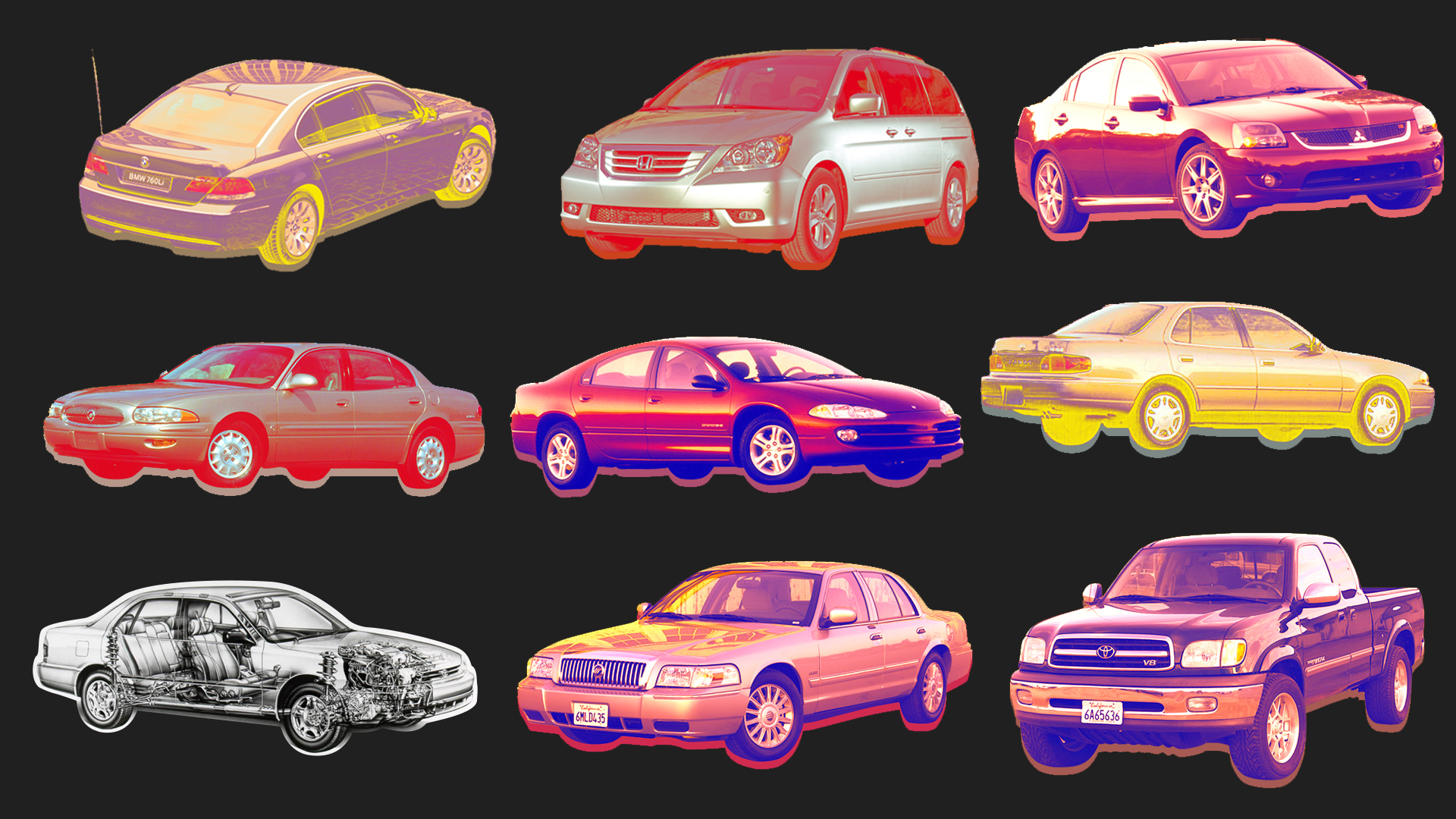

We may earn revenue from the products available on this page and participate in affiliate programs. Learn more ›
A beater is not junk. A beater is the car or truck you use up; something cheap that works reliably and is easy to fix when it eventually breaks. Beaters can be brand new or worn to the point that every bushing has dried to dust and the paint has fled the bodywork. Beaters are the cars we use every day. Beaters are usually the best cars we’ll ever own.
And when they can’t be patched up one more time, we heartlessly throw them away and get another one. Sentiment would only get in the way of the objective eye needed to find the right beater and then extract maximum value from it.
Theoretically, if you had infinite funds, you could buy a new Ferrari every year and use it up hauling building materials from Lowe’s to your Wyoming ranch. It would be a very expensive beater. But most of us aren’t the Sultan of Brunei or Mark Zuckerberg. So we need a good cheap beater to get us through, at least, a couple of years.
All advice is subjective. And the subject here is good cheap beaters and how to get the most out of them.
What To Look For
These are the last two generations of the big, front-drive Buick LeSabre sedan built with ennui as an engineering goal. Powered by the nearly bulletproof “3800” 3.8-liter V6, these cars weren’t quick, weren’t particularly fuel-efficient and were never, ever amusing. But the original owner demographics were Republican, off the actuarial charts, and headed for eternal rest.
Sedans are great, but minivans can do a lot more. When Honda introduced the 1999 Honda Odyssey the company finally built a true minivan in size and power. Like virtually Hondas these are exceedingly well built and age with some grace. Assuming, that is, that you find an example that hasn’t been beat up in family service too badly.
But the little known demographic fact about minivans is that, after young families, the group that buys vans like the Odyssey most are older drivers who appreciate the ease of entry and exit, the tall driving position and the versatility for hauling grandkids on weekends and heading to doctors’ appointments during the week. Finding one of those oldster-owned Odysseys is hitting beater gold.
A 2004 Odyssey EX in good condition and showing about 150K on the odometer should only run about $2,500 from a private party. The trick is, again, in shopping the seller and not just the van’s condition if you want to extract maximum value. A 2010 example with mileage still barely in five digits, should be under $10,000 and have another 100,000 miles left in it.
I’m personally biased on this since my beater is a 2000 Tundra SR5 Access Cab I bought new in 1999. Over more than 170,000 miles and 18 years of use I’ve had to replace the 4.7-liter V8’s starter and the worn out ignition switch and nothing else. The steering rack has been leaking since 2003 and it’s a slow enough leak that it’s never been a problem.
Trucks from any foreign or domestic manufacturer are good beaters. But the first generation Tundra – smaller than the current Tundra by a lot – is perfect for personal daily use and friendly in its low-key styling and unpretentious interior. I won’t argue against the F-150 or Chevy Silverado, but it’s hard to beat this old Tundra, even if it does get frankly atrocious fuel mileage.
Unfortunately the ruggedness of these trucks is well known and their market price reflects that. Even at the advanced age of 18, my old Tundra is still worth more than $4,000. The most desirable first generation Tundra – a 2006 Double Cab Limited – can still command around $15,000 despite 150,000 miles on the odometer. So shop around and shop carefully mindful that nothing holds its value better than a Toyota pickup.
11 Essential Pro Tips
- Simplicity is your friend. Yeah, that old BMW 7-Series might seem like a bargain at first glance. But old luxury cars are incredibly fragile, parts are expensive and fixing anything takes a torque wrench the length of your torso. Instead go for cars built like, well, trucks. So think old Crown Vics, not newer Fusions.
- Go for the expected. Old four-cylinder Camrys and Accords may be boring, but the world is full of cheap used parts for them. And the people who know how to fix them aren’t usually charging super-premium prices for their time either. Common cars, common parts and common knowledge are all to your beater advantage.
- Paint is irrelevant. But rust matters. A beater should be easily taken for granted. So don’t sweat some sun-bleached paint a salt-scarred bumper cover. But rust is the disease that kills cars and trucks. It’s not easily fixable and when it attacks areas like suspension attachment points, it can kill you too. Don’t be scared off something that looks gnarly but is otherwise a solid buy. Sturdiness over beauty every time.
- Shop the seller. As a general rule, the best beaters come from old people selling cars that have been lightly driven. Sellers in their twenties are rarely the original owners of decade-plus old cars and the younger your seller is, generally speaking, the less likely they are to have been meticulous in the maintenance of their vehicles. Meanwhile, oldsters in their seventies and eighties tend to buy boring cars they then maintain obsessively while keeping every receipt. And, often being retired, they don’t drive that much so the mileage should be low and easy. If a seller passes you a meth pipe to celebrate closing the deal, that’s a bad sign.
- Be open to alternatives. Don’t get stuck on finding only the nicest Accord on Earth so that you walk away from a perfectly awesome Camry. Look at everything and use common sense.
- Be suspicious. That 30,000 mile Chevy truck may in fact be too good to be true. Look for tell tale signs like brake pedal pads that’s been worn down with use. Or upholstery that’s threadbare where the owner’s 100-grit butt has been abrading it.
- Avoid modified vehicles. If someone has felt the need to add an aftermarket air intake, or bolted in a second-tier stereo system, who knows what else may have been tweaked to the point of disaster? Stick with vehicles with which people haven’t screwed.
- Don’t count on auctions. As tempting as it is to go to a government auction and pick up an old cop car or something driven by a county mental health administrator, be careful. Government owned vehicles are usually well maintained, but they’re driven by people who don’t own them and are happy to beat on them. A cop car may show 120,000 miles on the odometer, but that doesn’t count thousands of hours idling while writing citations. If you can, do compression tests, look for hastily repaired body panels, and extraordinary wear on things like door handles. Then proceed with caution.
- Follow market changes. To many of us who grew up in the 1970s and 1980s, the classic beater is an old, low mileage Buick sedan that comes out of an estate sale. But that’s a stereotype from a different era. Those of us now approaching the end of existence are late pre-boomers and early-boomers; not people raised during the Depression who fought World War II. They bought things like Lexus ES300s, Nissan Maximas and Honda Accords during the 1990s and it’s cars like those that are appearing on the beater market now. Don’t get stuck searching for cars of bygone eras.
- Know your family relations. A Lincoln Town Car is just a Mercury Grand Marquis that is really a Ford Crown Victoria. So most of the parts swap. A Lexus ES 300 is most Toyota Camry underneath. Beaters go for the cars with the best reliability track records and the best cheap parts.
- Look for the depreciation sweet spot. The very best time to buy a beater is when it has fully depreciated but there’s still plenty of life left in it. It will never go further down in value no matter how long you drive it. When does this sweet spot occur? If you know, tell us.
5 Go-To Platforms
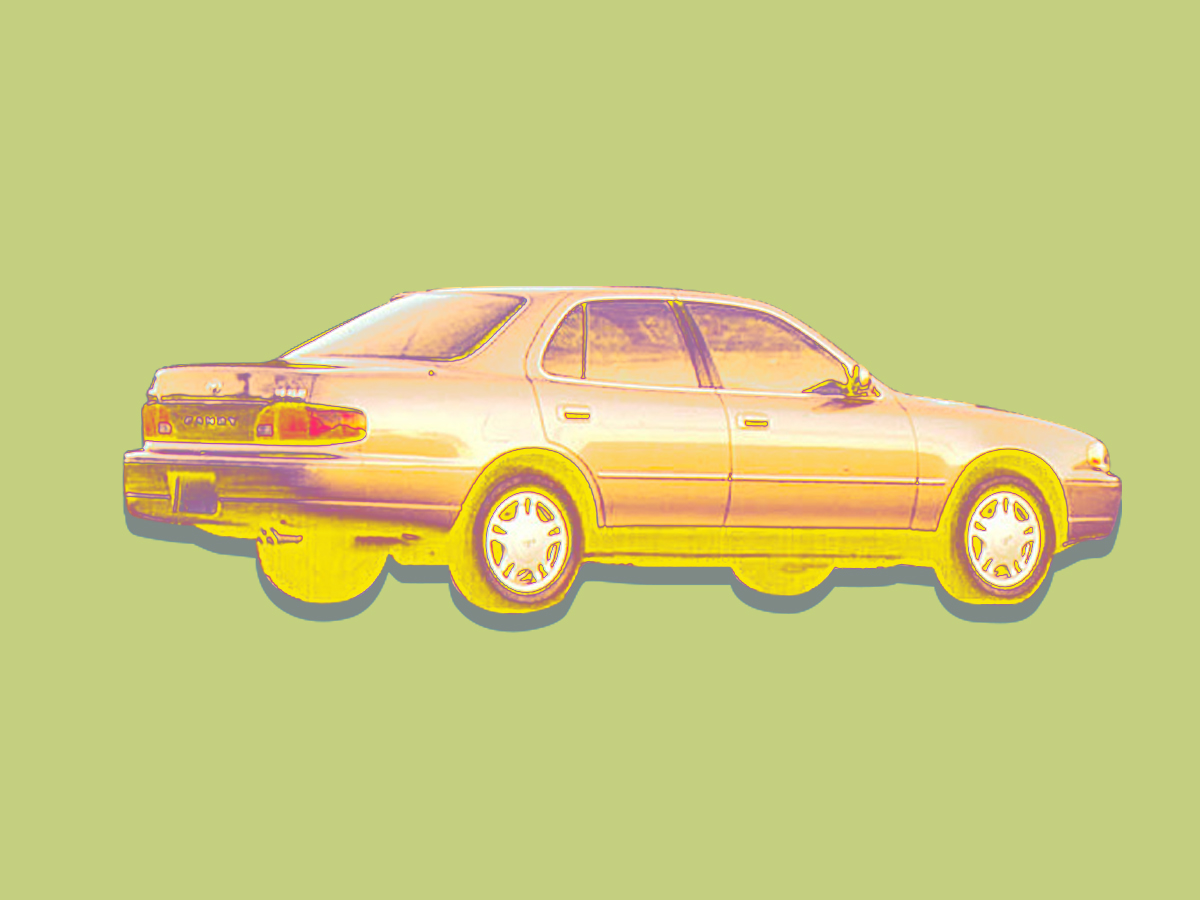
1. 1992-2017 Toyota Camry. The third generation 1992 Camry – “XV10” by platform name – is the nee plus ultra Toyota. Built like a frigate, as reliable as entropy and ridiculously comfortable, the XV10 has a well-earned reputation for ultimate ruggedness. Every other Toyota since then has been striving to match its standard. And a few of the subsequent generation Camrys since then have almost matched it.
The Camry has often been the best selling car in North America and it’s so ubiquitous that making generalizations about the car’s purchasers is tough. Most Camrys have gone to families who have beaten the life out of them. But plenty wound up in the garages of some of the planet’s most boring worker drones and retired boring worker drones. They used their cars for commuting, were usually meticulous maintaining, and are now disposing their tank-like Toyota while there is still plenty of life in them.
A good 1996 Camry XLE – top of the line when it was new – should only be around $2,000. Spend only a little bit more and you should pick up a sweetheart that’s been pampered better than Prince William.
2. 2005-2011 Ford Panther Platform
Ford’s full-size, rear-wheel drive, full-frame four-door sedans are almost trucks underneath. They use the same 4.6-liter “Modular” V8 as was once installed in the F-150, pieces like rearend assemblies can be swapped going back decades, and cab companies often get 300,000 miles or more out theirs before they crack open and expire like boiled lobsters.
The three members of the Panther family are the Ford Crown Victoria, Mercury Grand Marquis and Lincoln Town Car. By the end of their run, most were being sold into police fleets, rental fleets or livery fleets. There’s no reason to settle for an old cop car however, because there’s enough pampered civilian versions out there to seek out. Think of the old coppers as parts warehouses.
Also, avoid Town Cars that were chopped into limousines. Duh.
The slick choice here can be a 2010 or 2011 Grand Marquis. By then the Crown Vic wasn’t being sold at retail any more and the Marquis being built at a furious rate to fill Hertz and Avis lots. These Marquis models drove well with sweet rack-and-pinion steering and were usually equipped with leather upholstery that felt like nuclear-resistant vinyl.
A super-primo 2011 Grand Marquis should already have sunk below $10,000 from a private party. Higher mileage examples will go a lot lower and still likely have a couple hundred thousand miles left in them. They literally don’t make them like this any more.
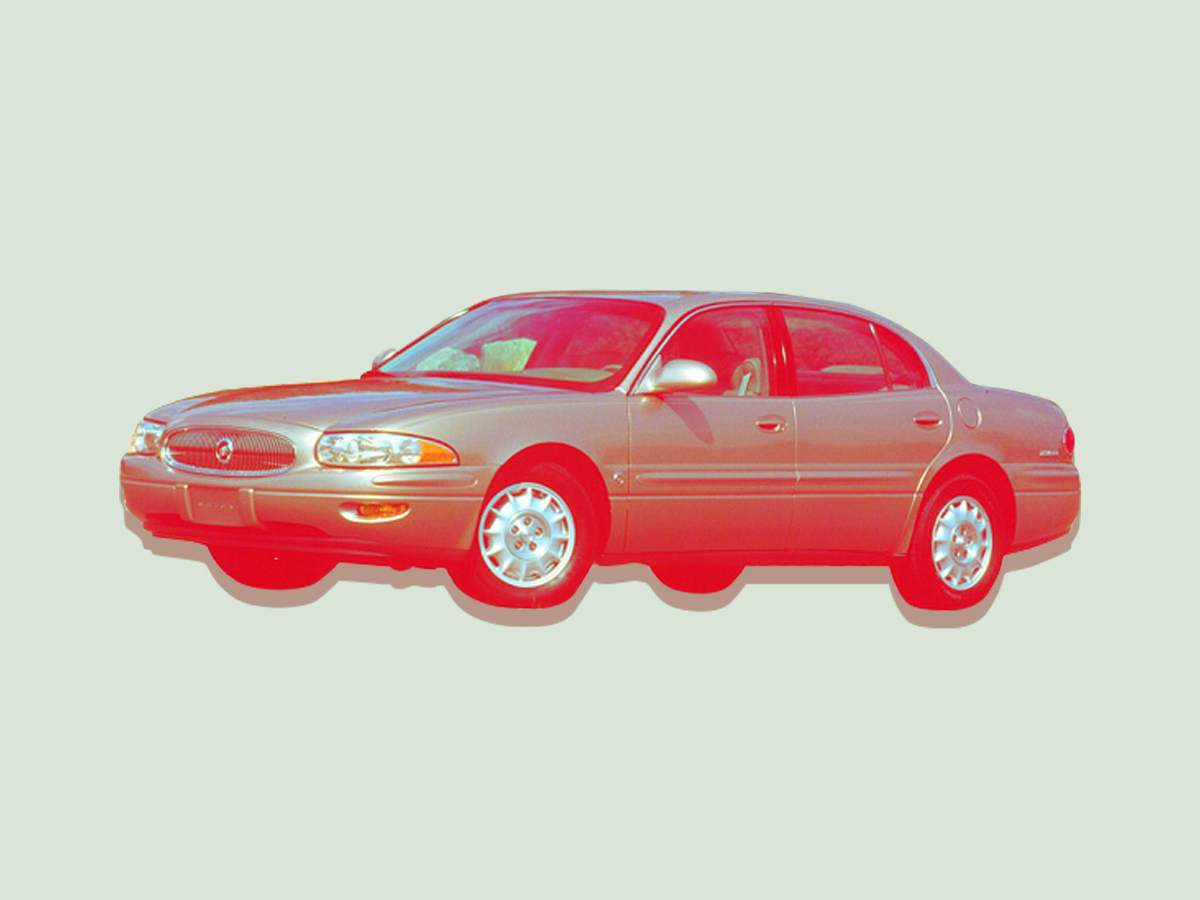
3. 1992-2005 Buick LeSabre
While Oldsmobile and Pontiac also built versions of the H- and G-body, it’s the Buick that was pumped out in the greatest number and the only one built by a GM division that still exists.
As grimly vulture like as this advice may be, look for your LeSabre in the obituaries. Low-mileage examples out of estate sales are the most cherished of beaters. Imagine the prestige of showing your friends a 15,000 mile LeSabre that was only driven by an 80 year-old Methodist on alternating Sundays.
Even that theoretical 2005 LeSabre Limited cream puff with 15K on the odometer should be available for a price near $5,000 from a private party. Examples with more typical six-figure mileage should be around $3,000 or less. The nicest 1995 LeSabre on Earth should still be only about $2,000.
4. 1999-2016 Honda Odyssey
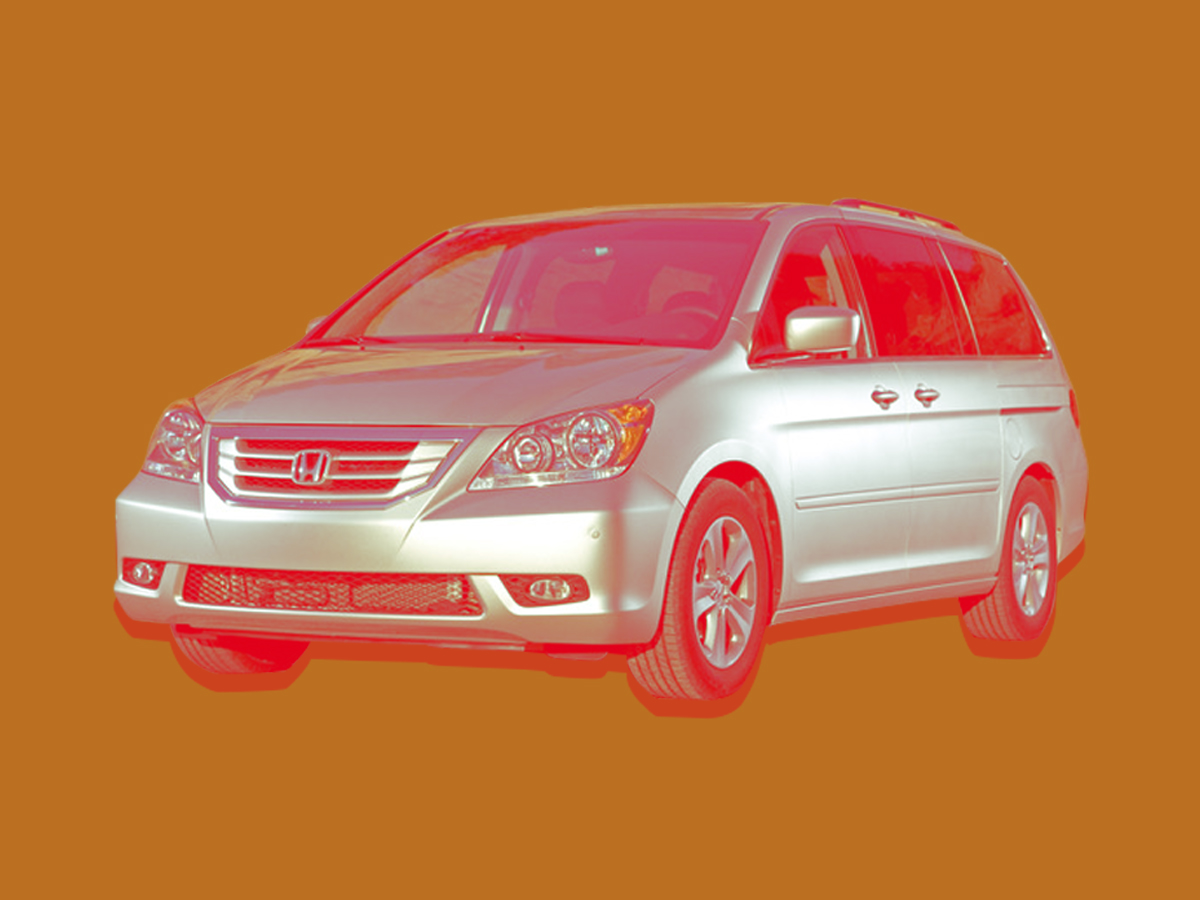
5. 2000 to 2006 Toyota Tundra
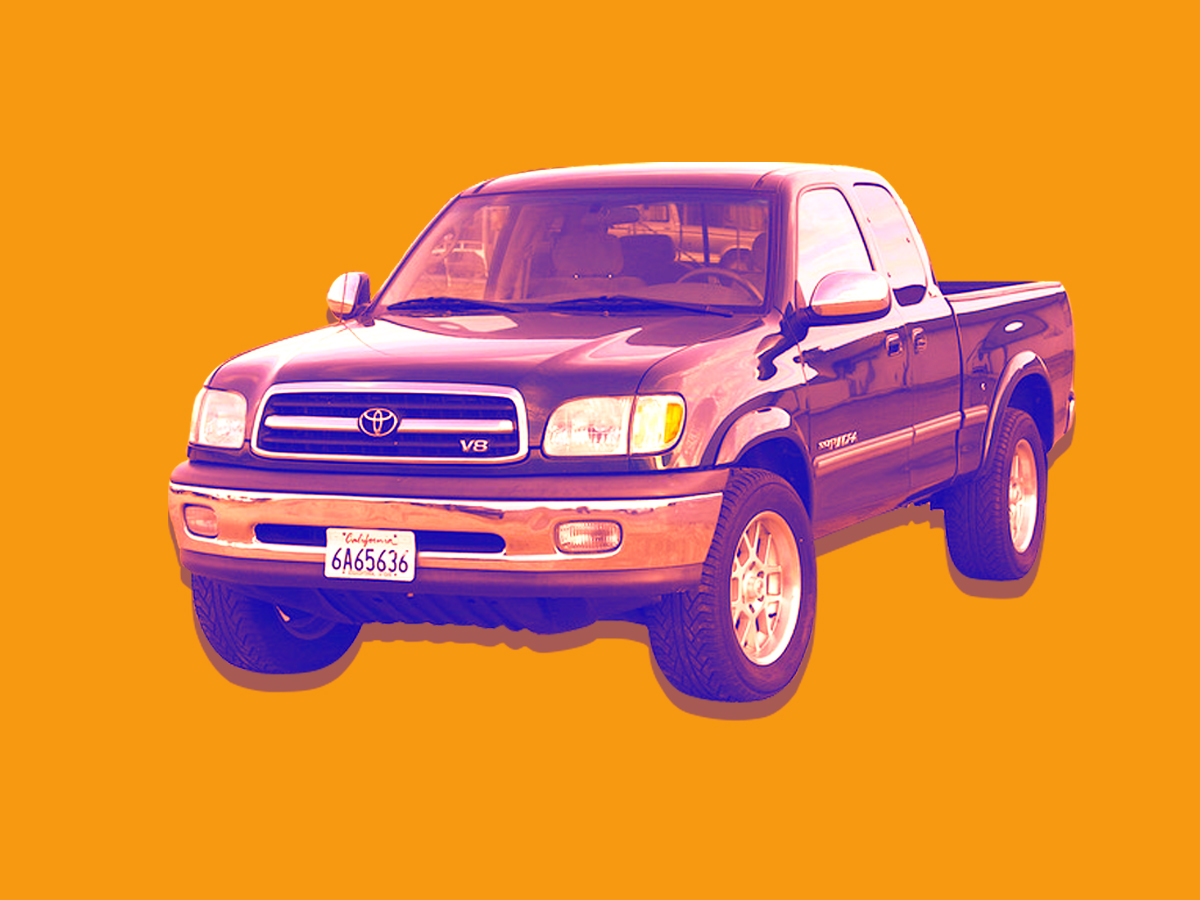
4 Cars to Avoid
- 1993 to 2004 Dodge IntrepidEverything that goes for the Intrepid also applies to the Chrysler Concorde, LHS and 300 of the same vintage.
First generation (1993-1997) Intrepids have already practically vanished from the Earth and the second generation (1998-2004) models aren’t far behind in the race to extinction. Everything that can go wrong with these vehicle will go wrong – twice. The transmissions are goopy and fragile, the engines leak in every possible way and they rust pretty horribly. The 2.7-liter V6 used as standard equipment in second generation vehicles is a legendary grenade. If someone pays you to take an Intrepid off their hands, still say no.
- Any MitsubishiMitsubishi has built some fine vehicles, like the all-wheel drive, turbocharged Eclipses of the 1990s and, of course, the Evos. But all those Eclipses have been used up, the Evos are all beaten down, and everything else the company has made ages horribly. But at least they’re cheap. And look it.
- Any German Luxury Car
- Audis, BMWs and Mercedes are built to be leased, sold once as certified used cars, and then be recycled. Parts are crazy expensive, mechanical expertise is expensive, and every electronic system goes into simultaneous meltdown as the odometer passes into six figures. Save yourself the hassle and heartbreak. Go buy a Camry.
Resources to Help Your Search
Beaters aren’t the stuff of enthusiasts. So don’t expect to find online message boards filled with beater tips and tricks. And the newsstands aren’t crammed with magazines telling you how to eke the last mile out of your 15 year-old sedan without spending money.
- Go to forums, but beware. That doesn’t mean that you’re alone. If you decide to get an old Mercury Grand Marquis you’ll find plenty of advice with a simple search for the Panther platform enthusiasts. The trick here is to be specific, bide your time and take all the advice with a grain of salt. To no one’s shock, it turns out a lot of guys griping or sincerely trying to help on online forums don’t have the slightest clue what they’re talking about.
- Your best resource is your family. Some of the very best beaters are those left behind by your dearly departed grandparents, aunts, uncles and cousins.
- The best deals can be had offline. The trick with beaters is to find older cars with strong reputations for reliability that are never likely to become collector’s items. You know, the cars that are owned by old people who don’t ever go on the Internet. And when it comes time to dump their Buick Century or Oldsmobile Regency, they may still be listing it in a newspaper or in those handout books you find stacked up at off-brand pizza places.
- Look for For Sale signs. Then there’s the ultimate resource of driving around looking for clean cars with For Sale signs stuck in their rear windows. It’s hit and miss, but the hit can be a big payoff.
- Always be suspicious of Craigslist. As useful as that classified ad service may be, it’s overrun by scamsters, fraudsters and plain old hucksters. You’re looking for the very most ordinary of cars and they’re all over the place.